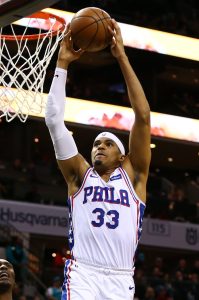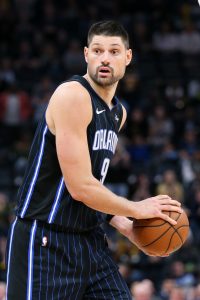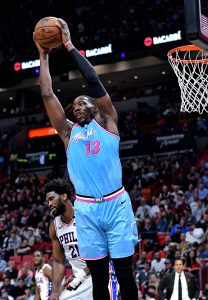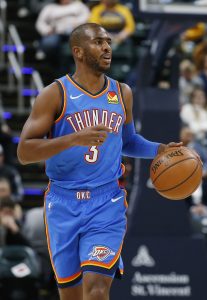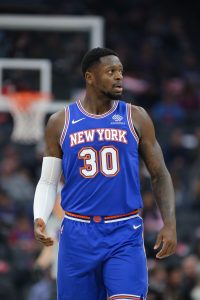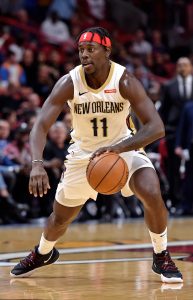The 2020 NBA draft lottery was initially scheduled to be held tonight in Chicago. Of course, as a result of the coronavirus pandemic, the lottery, the subsequent combine, and just about everything else NBA-related has been postponed indefinitely.
Still, a Monday report provided an important update on this year’s lottery: its format and process is expected to remain unchanged. That means the NBA’s three worst teams will still have the best odds to land the No. 1 overall pick, even if those teams don’t complete a full 82-game schedule and end up playing a different number of games.
It’s possible the NBA will be able to resume play this summer and complete some of the regular season games that were initially supposed to take place in March and April. However, it seems just as possible at this point that not all of the league’s 30 teams will be asked to take part in the resumption of the season.
[RELATED: 2019/20 NBA Reverse Standings]
Even in the event that bottom-feeders like the Warriors, Cavaliers, and Timberwolves do play again, the results of their final few regular season games are unlikely to significantly alter their lottery odds. So the hypothetical odds we passed along in March will probably end up being pretty similar to what the NBA uses whenever the lottery finally arrives. As a reminder, here are those tentative odds:
| Team | 1 | 2 | 3 | 4 | 5 | 6 | 7 | 8 | 9 | 10 | 11 | 12 | 13 | 14 |
|---|---|---|---|---|---|---|---|---|---|---|---|---|---|---|
| GSW | 14 | 13.4 | 12.7 | 12 | 47.9 | – | – | – | – | – | – | – | – | – |
| CLE | 14 | 13.4 | 12.7 | 12 | 27.8 | 20 | – | – | – | – | – | – | – | – |
| MIN | 14 | 13.4 | 12.7 | 12 | 14.8 | 26 | 7.1 | – | – | – | – | – | – | – |
| ATL | 12.5 | 12.2 | 11.9 | 11.5 | 7.2 | 25.7 | 16.8 | 2.2 | – | – | – | – | – | – |
| DET | 10.5 | 10.5 | 10.6 | 10.5 | 2.2 | 19.6 | 26.7 | 8.8 | 0.6 | – | – | – | – | – |
| NYK | 9 | 9.2 | 9.4 | 9.6 | – | 8.6 | 29.6 | 20.6 | 3.8 | 0.2 | – | – | – | – |
| CHI | 7.5 | 7.8 | 8.1 | 8.5 | – | – | 19.7 | 34.1 | 12.9 | 1.3 | >0 | – | – | – |
| CHA | 6 | 6.3 | 6.7 | 7.2 | – | – | – | 34.5 | 32.1 | 6.7 | 0.4 | >0 | – | – |
| WSH | 4.5 | 4.8 | 5.2 | 5.7 | – | – | – | – | 50.7 | 25.9 | 3 | 0.1 | >0 | – |
| PHX | 3 | 3.3 | 3.6 | 4 | – | – | – | – | – | 65.9 | 18.9 | 1.2 | >0 | >0 |
| SAS | 2 | 2.2 | 2.4 | 2.8 | – | – | – | – | – | – | 77.6 | 12.6 | 0.4 | >0 |
| SAC* | 1.3 | 1.4 | 1.6 | 1.8 | – | – | – | – | – | – | – | 86.1 | 7.6 | 0.1 |
| NOP* | 1.2 | 1.3 | 1.5 | 1.7 | – | – | – | – | – | – | – | – | 92.0 | 2.3 |
| POR | 0.5 | 0.6 | 0.6 | 0.7 | – | – | – | – | – | – | – | – | – | 97.6 |
With those odds in mind – and in honor of the lottery that would have happened tonight – we want to get your thoughts on what the most entertaining outcomes of the 2020 NBA draft lottery would be.
While this year’s draft class lacks a surefire No. 1 pick like Zion Williamson, prospects like LaMelo Ball, James Wiseman, Anthony Edwards, Onyeka Okongwu, Deni Avdija, and Obi Toppin should certainly appeal to 2020’s lottery teams, and jumping into the top four would be a big deal for some franchises in this group.
The NBA’s revamped lottery format ensures that the league’s very worst teams don’t have a huge advantage for the top picks and has created more opportunities for middle-of-the-pack lottery teams to get lucky. That’s exactly what happened a year ago — the Pelicans, Grizzlies, and Lakers (who eventually traded the No. 4 pick) moved into the top four despite ranking seventh, eighth, and 11th respectively in the lottery order. This year’s equivalent would be the Bulls and Hornets grabbing the top two picks, with the Spurs moving up to No. 4.
Teams like the Cavs, Pistons, and Knicks would more greatly benefit from landing a top pick, but there’s a chance the Warriors could end up at No. 1, despite already looking like a 2020/21 contender, with or without adding a potential future star to their roster.
Could the Wizards getting lucky and land a top rookie to add to the mix as John Wall returns? How about the Suns adding a top prospect to a core that already features Devin Booker and Deandre Ayton? Near-playoff teams like the Trail Blazers, Pelicans, and Kings, meanwhile, would become even more intriguing if they defy the odds and secure a top pick.
What do you think? Putting aside your fandom, what draft lottery outcome would be the most interesting or entertaining?
Head to the comment section below to share your thoughts!
